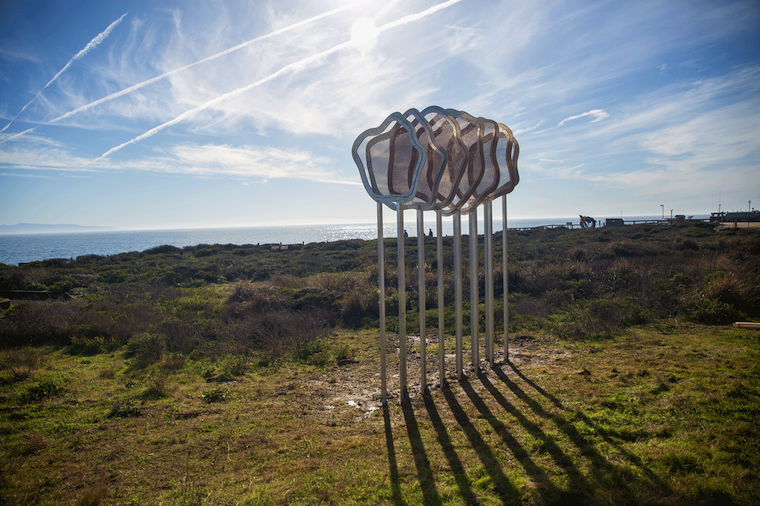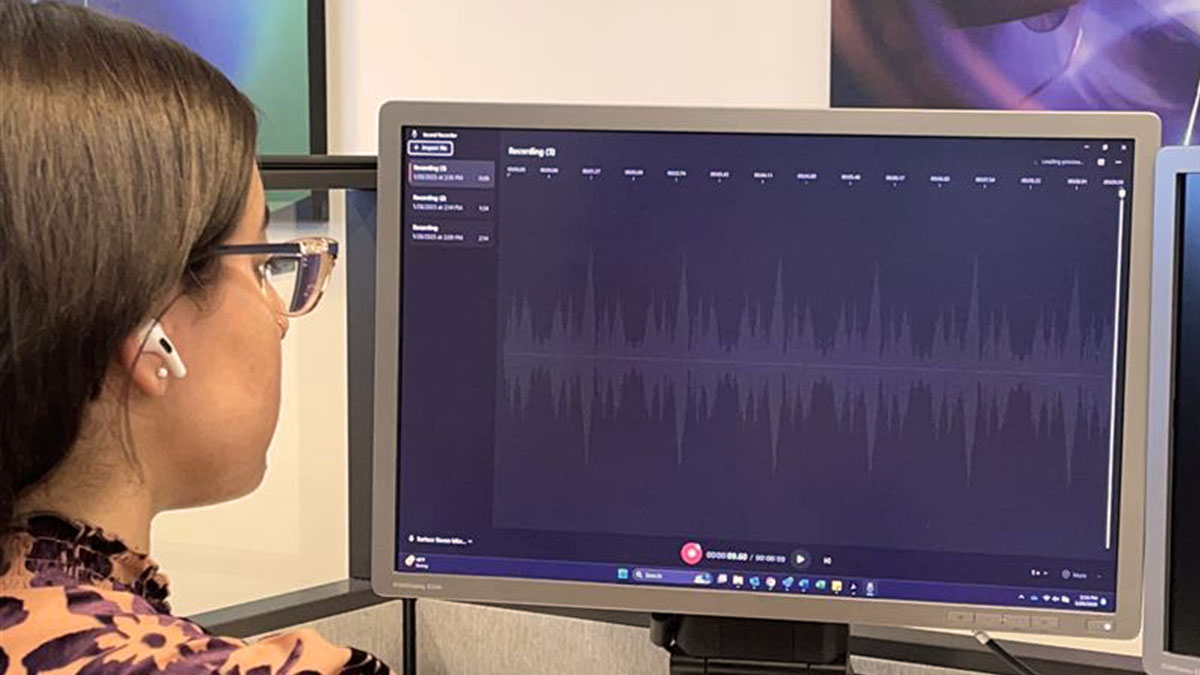The goal of the Art+Fog collective is to catalyze climate knowledge, foster societal awareness, inspire people to think about fog and share how creative ideas can lead to smart solutions for the future. All of this is done through bridging the arts and sciences to create a groundbreaking solution for a growing lack of water.
Gathering Cloud: Blending Creativity and Sustainability by Anja Ufeldt, a multimedia sculptor and Professor of Art, is the first project in this series and aims at collecting fog water. “Growing up in California, water has always been something that residents are thinking about,” says Ulfeldt.
The sculpture stands in the wetlands near the Seymour Marine Discovery Center. It features eight amorphous rings that echo the ethereal shapes of clouds. Each ring contains copper mesh that gathers fog water.
Peter Weiss-Penzias, a Professor of Microbiology and Environmental Toxicology and contributor to Art+Fog, started his research before Anja joined the team. He analyzed fog water for its contents and realized it serves as a viable source of water for plants and animals in the surrounding area.
Based on this research, Ulfeldt created a sculpture which drips water into the ground, thereby nourishing the landscape. Though Gathering Cloud was installed on December 18, 2024, Ulfeldt and her colleagues are waiting for the drier months of spring and summer for a more accurate collection of fog, uncontaminated by rain.
Gathering Cloud is one of the many projects aimed at restoring the marshlands around Younger Lagoon, which is directly West of the Seymour Center.
This project is specific to Santa Cruz, but in creating it, the Art+Fog collective researched fog collecting around the world, a practice which has been happening for thousands of years. Ulfeldt worked with the help of Weiss-Penzias and Jennifer Parker, a Professor of Art and Founding Director of UCSC OpenLab, an interdisciplinary lab where the research for Gathering Cloud began. The team studied heavy impact areas, including the Canary Islands off the coast of northwestern Africa and the Atacama Desert in Chile, where there is little rain but an abundance of fog.
“This exhibition weaves together art and ecology, where fog catchers emerge as quiet interventions—sustainable, low-impact solutions for clean water in a warming world,” says Parker. “It highlights the vital importance of working across the arts and sciences to develop creative solutions, showing how collaboration and small, deliberate actions can ripple outward, fostering hope and resilience in the face of environmental uncertainty.”
Ulfeldt, Parker, and Weiss-Penzias plan on expanding their research with Art+Fog through an upcoming exhibition at the Seymour Center, with the hopes of educating guests about the impact of climate change through art. This is just the beginning of what Ulfeldt calls “poetic approach to fog,” which has potential to create massive change in California and other areas suffering from droughts.




